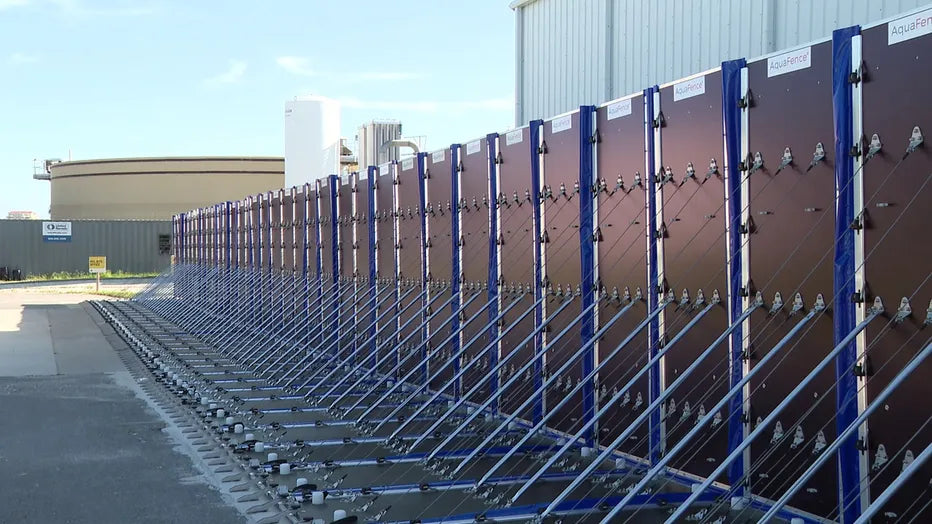
Will St. Pete’s New AquaFence Keep the Toilets Flushing This Hurricane Season?
Share
In a city where heavy rain can grind entire neighborhoods to a halt, one glaring problem stood out during past hurricanes: people couldn’t even flush their toilets.
That’s exactly what happened last year when storms like Hurricane Milton pushed floodwaters across St. Petersburg, overwhelming key parts of the city’s wastewater system. Now, the city has made a big move to prevent history from repeating itself. This week, crews finished installing a towering AquaFence around Lift Station 85—St. Pete’s most important wastewater facility.
A Lifeline Wrapped in Steel and Canvas
Lift Station 85 isn’t just any utility box. It supports roughly a quarter of the city’s wastewater flow, serving hospitals, assisted living centers, storm shelters, and the Emergency Operations Center. If it fails, everything downstream fails with it. So, the city built a 9-foot-tall, 500-foot-long portable floodwall around it.
The AquaFence system, already used at Tampa General Hospital, is a high-strength, reusable barrier made of puncture-resistant panels. Once deployed, it uses the weight of incoming floodwater to reinforce itself—no digging, no foundation, no permanent walls. This is the first time St. Pete has used the system. City officials hope it won’t be the last.
Why Now?

The answer is simple: they’ve been burned before. Last hurricane season, parts of St. Pete found themselves without working sewer systems for days. Waterlogged lift stations couldn’t move wastewater, causing backups in homes and facilities at the worst possible moment.
The AquaFence, city leaders believe, is a strategic fix for the kinds of storm surge failures that exposed those vulnerabilities. And it’s coming just in time. The Atlantic is heating up, hurricane activity is already on the rise, and early August marks the start of the most active part of the season. Waiting wasn’t an option.
A $700K Investment in Resilience
St. Pete officials say the city invested about $700,000 to secure the system and prep the site. Installation wrapped up in late July after crews spent June clearing the area and mapping out deployment zones.
Public Works Administrator Claude Tankersley emphasized that this isn’t just about protecting infrastructure, it’s about protecting people. “If this station goes down, we lose access to wastewater service in critical areas of the city,” Tankersley said. “That includes major hospitals and emergency shelters. We can’t afford to have that happen again.”
Mayor Ken Welch agreed, calling the AquaFence part of a broader push to invest in climate-ready solutions that can actually scale.
Will It Work?
The fence has held up in other cities, including Tampa and New York. It’s designed to be reused and redeployed, meaning it can become a permanent part of St. Pete’s storm readiness strategy if it proves itself here.
For now, city leaders are optimistic. But the real test will come with the next storm. Because when a hurricane hits, it’s not just about the winds or the flooding. It’s about whether St. Pete can keep the toilets flushing, and everything else running, when it matters most!

